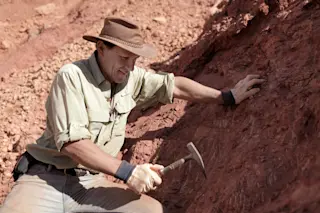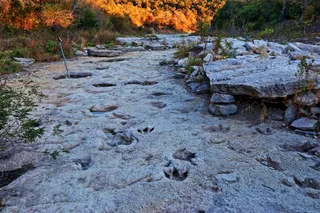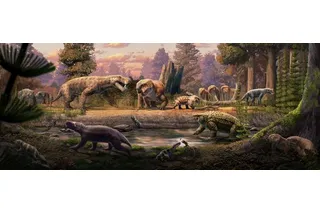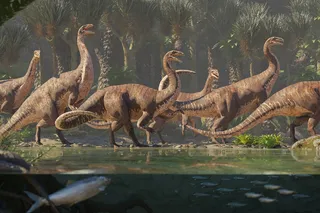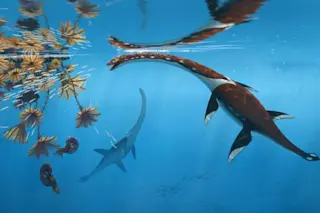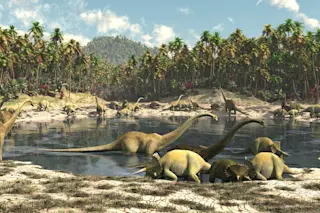Spinosaurus | Corey Ford/Stocktrek Images/Corbis
An ancient treasure destroyed by Nazi arrogance, check. A bevy of exotic locales, from the plazas of Italy to the barren sand and rock of the Sahara, check. A charming and resourceful hero in a brown fedora, check.
No, it’s not the latest entry in the Indiana Jones franchise; it’s a true science story that rivals any action-adventure flick Hollywood could create.
University of Chicago's Paul Sereno at a recent Spinosaurus dig in Morocco. | WGBH
“Bigger Than T. rex” showcases Spinosaurus, which lived about 100 million years ago and, at 50 feet from nose to tail, was one of the largest carnivorous dinosaurs. It was also one of the oddest, with its long, narrow snout, curious flat feet and a massive sail that rose eight feet along its spine. For decades, the animal’s Frankenstein-like appearance perplexed researchers.
The story of the first partial Spinosaurus ...


